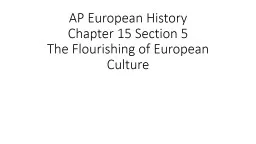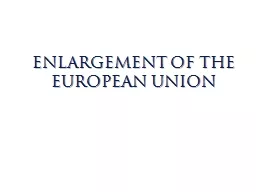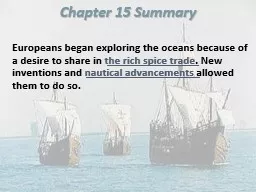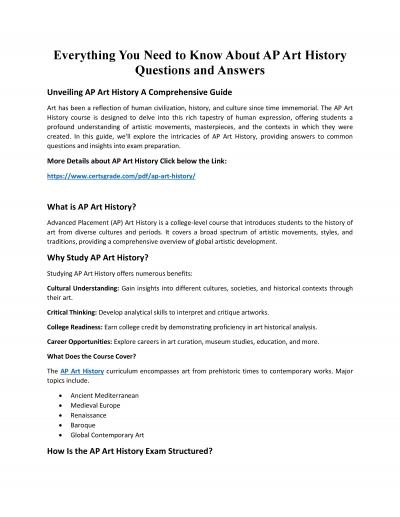PPT-AP European History Chapter 15 Section 5
Author : araquant | Published Date : 2020-06-26
The Flourishing of European Culture In the midst of religious wars and growth of absolutism European culture continued to flourish The Changing Faces of Art The
Presentation Embed Code
Download Presentation
Download Presentation The PPT/PDF document "AP European History Chapter 15 Section ..." is the property of its rightful owner. Permission is granted to download and print the materials on this website for personal, non-commercial use only, and to display it on your personal computer provided you do not modify the materials and that you retain all copyright notices contained in the materials. By downloading content from our website, you accept the terms of this agreement.
AP European History Chapter 15 Section 5: Transcript
Download Rules Of Document
"AP European History Chapter 15 Section 5"The content belongs to its owner. You may download and print it for personal use, without modification, and keep all copyright notices. By downloading, you agree to these terms.
Related Documents














